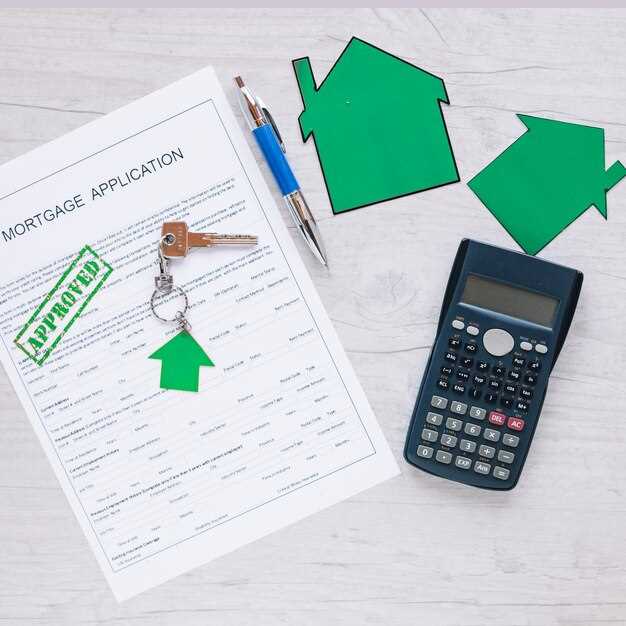If you want to know how property value is established, focus on three key elements: comparable properties, the property’s physical condition, and the current market trends. Carefully assess neighboring sales to gauge market value. Collect data from properties of similar size, age, and features. This comparative analysis forms the foundation of a reliable appraisal.
Next, evaluate the property itself. Inspect the overall condition, including any renovations or damages that may affect value. Features such as energy-efficient upgrades or outdated appliances can significantly influence the assessment. Identifying these aspects allows for a more precise valuation.
Understanding market trends is equally critical. Stay informed about local economic factors, demographic shifts, and interest rates that impact buyer behavior. This knowledge positions you better when discussing appraisals with real estate professionals. Combine these elements for a complete approach to property valuation.
Understanding Real Estate Appraisals

To accurately assess property value, engage a certified appraiser with local market expertise. This step ensures your appraisal reflects current conditions. Appraisers analyze various factors that influence property valuation.
- Property Type: The style and purpose–residential, commercial, or industrial–directly impact valuation. Different types have distinct market demands.
- Location: Proximity to amenities, schools, and public transport can elevate property value. Analyze local market trends to assess this impact effectively.
- Comparable Sales: Appraisers rely on recent sales of similar properties in the area, known as “comps.” Understanding these can clarify your property’s position in the market.
- Size and Layout: Square footage, number of bedrooms, and overall layout contribute significantly to value. Unique or efficient layouts often command higher prices.
- Condition: The state of the property plays a critical role. Upgrades and maintenance history enhance value, while needed repairs may detract from it.
Each of these factors requires a balanced evaluation. After gathering data, the appraiser employs different methods such as the sales comparison approach, cost approach, and income approach to establish value.
- Sales Comparison Approach: This method compares similar properties to determine market value through recent sale prices.
- Cost Approach: This takes into account the cost to replace or reproduce the property, accounting for depreciation.
- Income Approach: Primarily used for investment properties, this calculates value based on income generation potential.
Post-assessment, you receive a detailed report outlining the findings. Regular appraisals are wise, particularly during market fluctuations, to ensure an accurate understanding of your property’s worth. This knowledge empowers more informed decision-making for selling, buying, or refinancing.
How is Property Value Determined in Real Estate?

Property value hinges on several key factors that appraisers meticulously analyze. Begin with the location; proximity to schools, amenities, and transport significantly impacts desirability. Comparable sales, often called “comps,” play a vital role in establishing a baseline value. Review properties similar in size, age, and condition within the same neighborhood.
Next, consider the property’s condition. Recent renovations or upgrades can elevate a property’s Worth. Evaluate essential aspects such as roof integrity, plumbing, and electrical systems. A thorough inspection often uncovers issues that might reduce value.
Market trends also influence valuation. Observe current market demand and inventory levels. In a seller’s market, prices typically rise due to competition among buyers, while a buyer’s market may depress prices due to increased supply.
Beyond the physical attributes, consider economic factors. Local job growth and the economic health of the area can drive demand and, consequently, property values. Additionally, zoning regulations and future development plans can signal potential changes in value.
Lastly, engage with a certified appraiser who utilizes these methods to assess your property’s fair market value accurately. Understanding these determinants equips you to make informed decisions whether buying, selling, or investing in real estate.
Appraisal vs. Market Value: Key Differences Explained

Appraisal value and market value represent distinct concepts in real estate. Appraisal value is determined by a licensed appraiser based on a systematic analysis of various factors, including the property’s condition, features, and recent sales of comparable properties in the area. This process typically involves a detailed report that includes an assessment of the property and its attributes, local market conditions, and neighborhood trends.
Market value, on the other hand, reflects the price a buyer is willing to pay for a property at a specific point in time. It is influenced by external factors such as buyer demand, economic conditions, and competition among properties. Market value can fluctuate rapidly as it reacts to shifts in buyer sentiment and local real estate trends, while appraisal value tends to be more stable, relying on concrete data and methodology.
Key Differences
To distinguish between the two, consider timing and method. Appraisals take into account detailed analysis over a longer period, while market value captures real-time buyer activity. Additionally, appraisals are often required for financing purposes and typically carry significant weight in lending decisions. Conversely, market value serves as a more immediate gauge of property performance and can indicate potential selling price.
Implications for Buyers and Sellers
Understanding these differences helps buyers and sellers navigate real estate decisions. Sellers should consider market value for pricing strategies to attract buyers. In contrast, buyers should lean on appraisal values to ensure they are making sound financial investments. Both values are integral, but each serves its purpose in the real estate landscape.
What Factors Influence Property Appraisal Results?
Location is the primary driver of property value. Properties in desirable neighborhoods with access to quality schools, parks, and shops consistently rank higher. Pay attention to recent developments or infrastructure projects in the area, as they can significantly impact future values.
The condition of the property plays a key role in appraisal results. Well-maintained homes with updated features and modern systems are valued more favorably. Invest in necessary repairs and improvements, focusing on kitchens and bathrooms, which often yield the highest returns.
The size and layout of a property matter. Larger homes typically command higher prices, but functional layouts attract more buyers. Open floor plans and versatile spaces enhance a property’s appeal. Consult a real estate expert to optimize your layout before an appraisal.
Comparable sales, or “comps,” in the area provide a benchmark for property value. Recent sales of similar homes give appraisers a clear reference point. Review local listings and sales data to understand the market and discuss findings with your appraiser.
Market trends also influence appraisals. A strong buyer’s market may lead to lower valuations, while a seller’s market often sees higher prices. Stay informed about local real estate trends to anticipate how this may affect your property’s appraisal.
Finally, the appraiser’s experience and expertise can shape the outcome. Choose a reputable appraiser who understands the local market and has a strong track record. A skilled appraiser will accurately assess your property’s value based on all these factors.
Step-by-Step Real Estate Appraisal Process
Begin the appraisal by defining the purpose of the assessment. Determine whether it’s for a sale, refinance, or investment analysis, as this influences the approach and methodology used.
1. Gather Property Information
Collect details about the property. Include location, age, size, number of bedrooms and bathrooms, and any unique attributes that enhance value, such as a swimming pool or energy-efficient features. Utilize public records and property databases for accurate information.
2. Conduct a Market Analysis
Perform a Comparative Market Analysis (CMA). Identify and analyze recent sales of comparable properties in the area. Key metrics include:
| Property Type | Sale Price | Size (sq ft) | Sale Date |
|---|---|---|---|
| 3BR/2BA | $300,000 | 1,500 | 2023-05-15 |
| 3BR/2BA | $320,000 | 1,600 | 2023-06-10 |
| 4BR/3BA | $350,000 | 1,800 | 2023-07-05 |
This analysis provides a baseline for property value, making adjustments based on differences in features and conditions.
3. Inspect the Property
Schedule a detailed on-site inspection. Assess the property’s condition thoroughly. Look for structural issues, maintenance needs, and overall appeal. Document findings with photographs and notes. This step helps verify information gathered earlier.
4. Choose an Appraisal Method
Select an appropriate appraisal method. Common methods include:
- Sales Comparison Approach: Ideal for residential properties; compares to similar sold properties.
- Cost Approach: Considers the cost of land plus the cost to build the property, suitable for new construction.
- Income Approach: Applicable for investment properties; evaluates income-generating potential.
5. Prepare the Appraisal Report
Compile findings into a clear appraisal report. Include property details, market analysis, inspection data, and chosen methodologies. Use precise language and provide justified calculations for value conclusions.
6. Review and Submit the Report
Review the report for accuracy and completeness. Submit it to the interested parties, such as lenders, buyers, or real estate agents. Ensure all parties understand the appraisal value and any conditions affecting it.
Understanding Appraisal Contingencies in Real Estate Transactions
Appraisal contingencies protect buyers during real estate transactions by ensuring the property’s appraised value meets or exceeds the purchase price. If the appraisal falls short, buyers can negotiate repairs, reduce the offer, or walk away from the deal without financial loss.
How Appraisal Contingencies Work
Typically included in the purchase agreement, an appraisal contingency requires the seller to provide documentation of the property’s appraised value. Buyers should pay attention to the time frame set for the appraisal process, which often aligns with the overall timeline of the transaction. If the appraisal value does not meet expectations, buyers have options. They can request renegotiation of the purchase price, ask the seller to improve the property, or opt out of the contract without penalties.
Benefits for Buyers
Incorporating an appraisal contingency adds a layer of security. Buyers avoid overpaying for a property that may not align with its market value, reducing the risk of financial loss. It’s prudent for buyers to work closely with their real estate agent to understand regional market trends, ensuring they make informed decisions based on appraisal results.
Common Property Valuation Methods and When to Use Them
The sales comparison approach stands out when assessing residential properties. This method compares the subject property with recently sold properties in the area that share similar characteristics. Adjustments are made for differences in features like size, condition, and location. It works well in active markets with plenty of comparable sales data.
The cost approach serves best for new constructions or unique properties. It estimates the cost to replace the building, subtracting depreciation. This method is particularly useful when market data is limited, such as with specialized commercial properties or historic buildings where there are few comparables.
The income approach is crucial for investment properties. It evaluates the property’s ability to generate income, considering potential rents, occupancy rates, and operating expenses. Investors often prefer this method, as it assesses the return on investment effectively. It is typically applied in commercial real estate and multifamily units.
In cases of mixed-use developments or properties with complex characteristics, using a combination of these methods provides a holistic view. For instance, an investor might use both the income and sales comparison approaches to ensure a rounded valuation.
Encouraging clear communication with a certified appraiser helps navigate these methods. They can tailor the valuation method to specific property types and market conditions, ensuring accurate outcomes that reflect true market value.
Impact of Location and Market Trends on Property Appraisals
Investors should prioritize location and market trends as pivotal factors influencing property appraisals. A strategic analysis of these elements leads to informed investment decisions.
Location Significance
Location plays a critical role in determining property value. Here are key aspects to consider:
- Proximity to Amenities: Properties near schools, shopping centers, parks, and public transportation often see higher appraisals.
- Crime Rates: Areas with lower crime rates attract more buyers, positively impacting value.
- School Districts: Quality of local schools significantly influences family-oriented buyers, thus affecting market demand.
- Future Development Plans: Check if the area has planned infrastructure projects, such as highways or commercial centers, that can enhance property values.
Market Trends Impact
Tracking local housing market trends is essential for accurate appraisals. Key indicators include:
- Sales Comparables: Recent sale prices of similar properties in the vicinity offer insight into current market values.
- Market Demand: A high demand coupled with low supply usually drives values up. Monitor local real estate listings for a clear picture.
- Interest Rates: Changes in mortgage rates affect buyer affordability, influencing demand and–by extension–property values.
- Economic Indicators: Local employment rates and economic growth are strong indicators of market stability and property appreciation.
Understanding these elements equips potential buyers and investors to assess properties effectively, leading to smarter choices in real estate transactions.
How to Prepare for a Real Estate Appraisal: Tips and Best Practices
Gather all relevant documents related to your property. This includes the title deed, recent tax assessments, and any records of renovations or repairs. Having these documents organized allows the appraiser to quickly verify and assess your property’s value.
Improve your home’s curb appeal. Simple landscaping, a fresh coat of paint, or minor repairs can enhance the first impression of the property. Ensure walkways are clear and the front door is inviting. A well-maintained exterior sets a positive tone for the appraisal.
Complete Necessary Repairs
Address any obvious issues before the appraisal. Fix leaky faucets, squeaky doors, and cracked tiles. Completing small repairs prevents the appraiser from deducting value for unaddressed maintenance problems.
Provide Access and Be Present
Ensure the appraiser has access to all areas of the property. Clear any clutter that might obstruct the view. Being present during the appraisal gives you the opportunity to point out features and upgrades that may not be immediately apparent. Prepare to answer questions about the property’s history and improvements.
Highlight unique features and recent upgrades. If you’ve recently added energy-efficient appliances or improved the insulation, mention these updates to the appraiser. Features that can justify a higher appraisal value should be clearly communicated.
Finally, research comparable properties in your area. Provide the appraiser with data on recently sold homes that are similar in size, location, and features. This information can support a stronger valuation for your property.
Video:
Unlocking the Secrets of Real Estate Appraisals!
Unlocking the Secrets of Real Estate Appraisals! by ReelEstate No views 1 month ago 2 minutes, 30 seconds
Q&A:
What factors influence the value of a property during an appraisal?
The value of a property is determined through several key factors. First, the location plays a major role; properties in desirable neighborhoods typically command higher prices. Next, the condition of the property itself, including its age, maintenance level, and any upgrades or renovations, directly impacts its assessed value. Market trends and economic conditions also influence property values; for example, if demand for housing is high, values may increase. Lastly, comparable sales—similar properties that have recently sold in the area—are analyzed to establish a fair market value for the property in question.
How does an appraiser determine comparable properties?
An appraiser identifies comparable properties, often referred to as “comps,” by looking for recently sold homes in the same area that share similar characteristics. This includes factors like the size of the property, the number of bedrooms and bathrooms, the style of the home, and its condition. The appraiser also considers the proximity of these comps to the subject property and adjusts values based on differences, such as square footage or unique features. This comparative analysis ensures a more accurate appraisal by reflecting the current market trends and conditions.
What is the difference between a market appraisal and a tax assessment?
A market appraisal is an estimate of a property’s value based on its condition and the current real estate market, typically conducted by a licensed appraiser when a property is bought or sold. In contrast, a tax assessment is a valuation performed by a local government for tax purposes, which may not always reflect the current market value. Tax assessments often use standardized formulas that consider property features but may lag behind the market. As a result, market appraisals can provide a more accurate picture of what a property could sell for at a given time.
Why might an appraisal come in lower than expected?
Several reasons can contribute to an appraisal coming in lower than anticipated. A decline in the real estate market may lead to lower bids for properties, affecting value assessments. If the appraiser identifies issues such as needed repairs, outdated systems, or other deficiencies, these factors can also reduce the property’s value. Additionally, a lack of recent comps in the area or discrepancies in property features, such as square footage or location advantages, can lead to a lower appraisal. This outcome can be frustrating, especially for sellers expecting higher offers; understanding these factors can help in either negotiating or preparing for potential obstacles.
What steps can property owners take if they disagree with an appraisal?
If a property owner disagrees with an appraisal, there are several steps they can take. First, it’s important to thoroughly review the appraisal report for accuracy and to identify any specific areas of concern. They can gather evidence such as comparable property sales that support a higher value and present this data to the appraiser or lender. If the owner believes significant errors were made, they can request a reconsideration of the appraisal. In some cases, hiring a second appraiser for a fresh perspective may also be beneficial. Engaging in open communication with the lender can help facilitate discussions about the appraisal’s findings.
What factors influence the value of a property during an appraisal?
The value of a property is determined by various elements. Key factors include location, as properties in desirable neighborhoods typically hold higher value. The condition of the property also plays a significant role; well-maintained homes attract higher appraisals. Market trends can influence values as well; for instance, a strong demand in the housing market can lead to increased property values. Additionally, comparable sales, or “comps,” help appraisers determine a property’s worth based on similar properties that have recently sold in the area. Other considerations include the property’s size, age, and any unique features that may enhance its appeal, such as renovations or proximity to amenities.
How does the appraisal process work and who conducts it?
The appraisal process begins when a property owner requests an appraisal, often as part of a sale, refinancing, or property tax assessment. An appraiser, who is a licensed professional, is then assigned to the case. The appraiser visits the property, inspecting its interior and exterior, and takes notes on its condition, layout, and features. They also examine comparable properties in the area to gauge the local market. After gathering this information, the appraiser compiles a report detailing their findings, which includes an estimated value. This report is then provided to the client, whether it’s a lender, buyer, or seller, to guide decisions related to the property’s financial worth.




